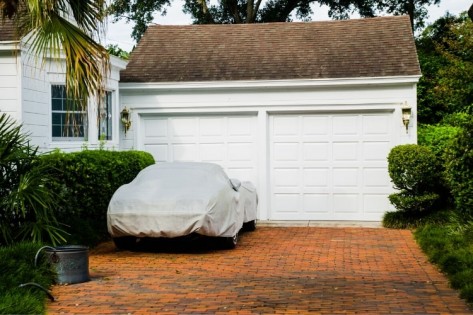CAR NOT BEING USED: HOW TO KEEP YOUR RIDE READY TO HIT THE ROAD
Whether it’s a a change in your commute, maternity leave, or a public health emergency, you could be forced to put your car on stand-by for an extended period of time.

Follow these steps to ensure your car is in the same shape (or better!) than when you put it away.
Wash & Protect Exterior
It may seem like a waste of time to wash your car when you’re putting it away but cleaning your ride can keep it looking like the day you put it away. Removing external debris like bugs, bird droppings, dirt, and water stains stops them from damaging your paint while your car sits.
After washing and claying your car, make sure to protect it.
You can use a wax like 303 Spray Wax, or 303® Touchless Sealant which uses SiO2 technology to act as a shield against water, dirt, and grime from embedding onto the paint.
Also consider using a UV protectant, especially if your car is going to be sitting outside during this extended break. 303® Protectant prevents UV rays from causing fading and cracking in any rubber, plastic, or vinyl surfaces. You should use on trim, tonneau covers, even windshield washer blades, as well as the rubber and plastic components in your engine compartment.
Clean & Protect Interior
Same concept applies to your interior. Vacuum the floor and between the seats, then use a product like 303® Protectant Wipes for seats, consoles, even LCD screens. Once your interior is clean, break out that 303® Protectant again and use it on your dashboard, especially if your car is going to sit outside. The sun’s rays can cause fading and cracking pretty easily if it’s going to sit for an extended period of time.
Pro Tip: Before you shut the doors and lock it up, make sure you close all the vents and windows to keep any critters from turning your car into their new home.
Maintain Battery
Your car’s battery can be drained pretty easily while it sits idle. The electronics inside, like its computer and clock, constantly draw current from the battery. Consider hooking up what’s known as a trickle charger. Profetto explains why, “A battery maintainer generates a trickle charge of current such as: 1.5, 3.0, 6.0 and higher amps that, when connected correctly to the battery, provide a constant regeneration of the battery power. This constant recharging will protect the battery and allow the vehicle to be started when needed.”
Use Waterproof Cover
The last step is to make sure you don’t waste all your hard work. Use a waterproof cover that breathes to shield your car from the elements. A tarp sounds like a good idea, but the material can actually scratch your paint. It also traps heat which can harm your interior and trim.
Start Engine Once Every Two Weeks
Once you have shelved your car in a garage, driveway, or spot on the street, it’s important to continue to turn that ignition and run the engine periodically. Whether it’s you, a friend, or family member, try to make sure your car is started and lightly driven for 10-15 minutes at least once every two weeks. You can go up and down your driveway, around the block, or just let it idle outside for a few minutes.
Profetto goes in-depth to explain why, “It is important to start the engine every few weeks for several reasons including: 1. Circulate the oil throughout the engine to make sure an oil film coats all the internal surfaces to prevent any flash rusting; 2. Circulate gasoline throughout the fuel system to make sure any small openings in the fuel injectors receive fuel and flush out any particles and pumps and valves are operating correctly; 3. Circulate the coolant throughout the cooling system to prevent any particles from settling out of the coolant and creating a plugging condition; and 4. Recharge the battery through the alternator, the car computer and other electronics in the vehicle use considerable power if the car is not running.”